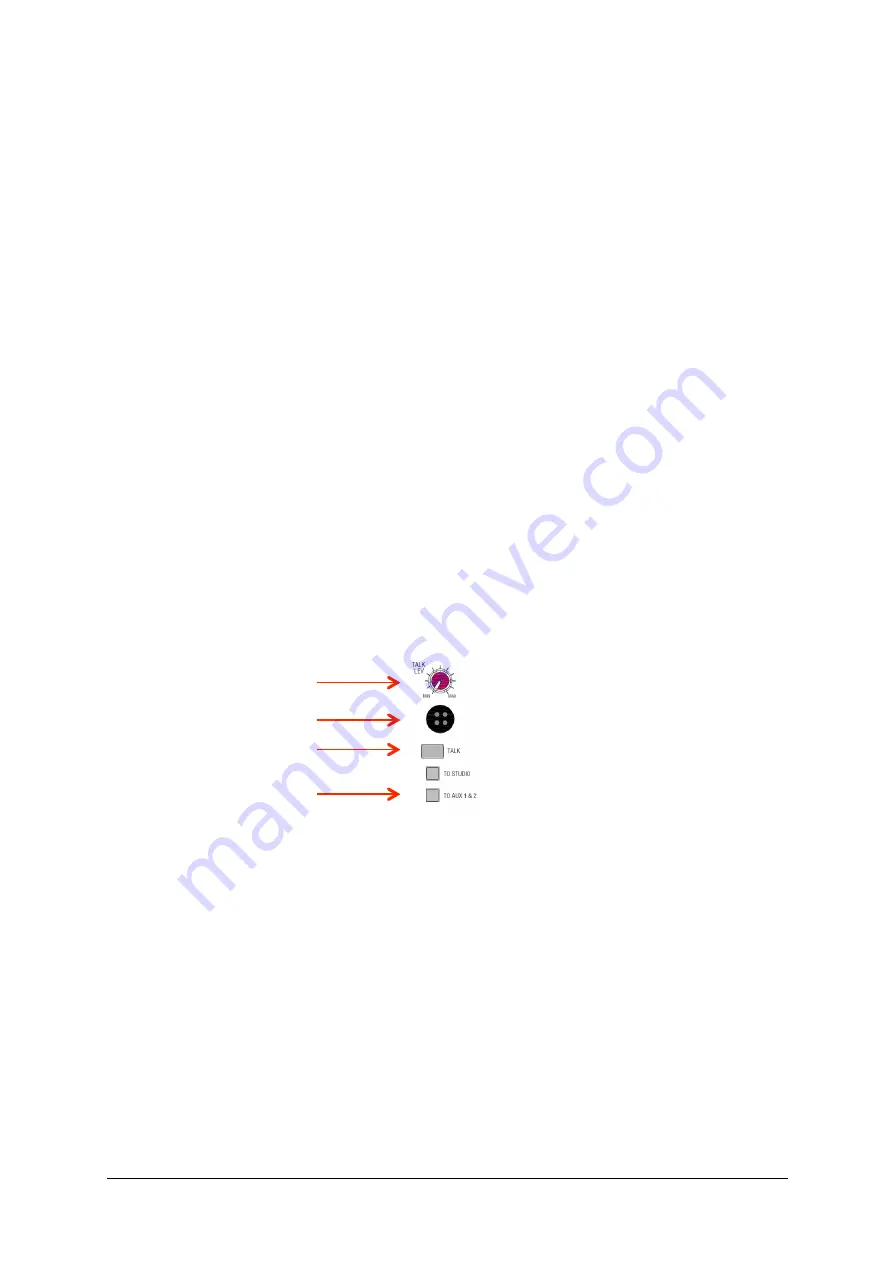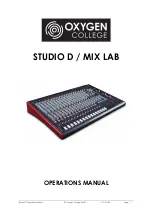
Studio D Operations Manual
© Oxygen College 22407
V2 – 01/20 Page | 4
Auxiliary sends and stereo channels
The ZED-R16 operates just like any live mixing console when it comes to using Auxiliary Sends
to provide monitoring to the performers and using external effects such as reverb. In the
case of Studio D, the Aux Sends are patched as follows:
Aux send 1 > MONO headphone amp 1
Aux send 2 > MONO headphone amp 2
Aux send 3 > MONO headphone amp 3
Aux send 4 > drives the TC M350 external effects processor (Described later in the manual)
The stereo channels provide a return point for the effects processor and also the computer’s
internal soundcard, and is patched as follows:
ST 1 – TC M350 effects return
ST 2 – Computer soundcard
ST 3 – Not connected
ST 4 – Not connected
Talk Back
The ZED-R16 console has a built in talk back microphone, which allows the engineer to
communicate to the performers via Auxiliary Sends 1 & 2. To use this feature, ensure the
To
Aux 1&2
button is engaged, hold down the
Talk
button and speak into the microphone. You
can control the level of the talk back microphone with the
Talk Lev
control. A diagram of
the talk back section is shown below.
THE ZED-R16 HAS MANY OTHER USEFUL FEATURES THAT ARE NOT COVERED IN THIS MANUAL, FOR MORE INFORMATION
CONTACT YOUR TRAINER OR VISIT ALLEN-HEATH.COM TO READ MORE.
Art Head Amp Pro
This headphone amplifier will distribute individual auxiliary sends from the ZED-R16 console to
the live room of studio D, providing headphone monitoring for the performers. Its main
features are:
•
Six Channels with Separate Bass & Treble Controls
•
Front & Rear Panel Output Jacks
•
XLR & 1/4-inch TRS Balanced Inputs
•
Operates in Stereo, Mono (Source Left), Mono (Source Right) or Summed Mono
(Source Left & Right)
•
Auxiliary Front Mounted Separate Source Input
•
8-Sement LED Level Indicators on all Channels & Bus
Talk Back Volume
Talk Back Microphone
Talk Button
Send to AUX 1 & 2































